-
 Bitcoin
Bitcoin $118900
0.42% -
 Ethereum
Ethereum $3710
-2.88% -
 XRP
XRP $3.513
-2.96% -
 Tether USDt
Tether USDt $1.000
-0.01% -
 Solana
Solana $203.0
3.65% -
 BNB
BNB $765.5
-1.29% -
 USDC
USDC $0.9998
0.00% -
 Dogecoin
Dogecoin $0.2671
-4.18% -
 Cardano
Cardano $0.8817
-3.63% -
 TRON
TRON $0.3139
-0.64% -
 Hyperliquid
Hyperliquid $44.34
-5.45% -
 Stellar
Stellar $0.4637
-4.08% -
 Sui
Sui $3.908
-2.59% -
 Chainlink
Chainlink $19.34
-2.62% -
 Hedera
Hedera $0.2712
-3.77% -
 Avalanche
Avalanche $24.97
-4.13% -
 Bitcoin Cash
Bitcoin Cash $519.8
-1.48% -
 Shiba Inu
Shiba Inu $0.00001518
-3.74% -
 Litecoin
Litecoin $115.6
-2.21% -
 Toncoin
Toncoin $3.460
3.68% -
 UNUS SED LEO
UNUS SED LEO $8.977
-0.07% -
 Polkadot
Polkadot $4.460
-2.96% -
 Uniswap
Uniswap $10.53
-5.43% -
 Ethena USDe
Ethena USDe $1.001
0.01% -
 Monero
Monero $323.6
-0.36% -
 Pepe
Pepe $0.00001379
-2.60% -
 Bitget Token
Bitget Token $4.772
-3.90% -
 Dai
Dai $0.9999
0.00% -
 Aave
Aave $307.5
-6.66% -
 Bittensor
Bittensor $441.8
0.84%
How does voting work on a blockchain?
Blockchain voting uses decentralized ledgers to securely record votes, ensuring transparency and tamper-proof elections through encryption and smart contracts.
Jul 23, 2025 at 04:35 am
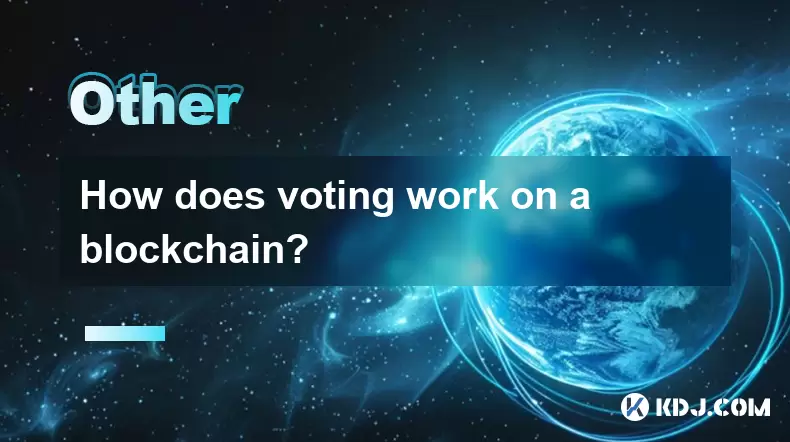
Understanding Blockchain Voting Mechanisms
Blockchain technology has introduced a new paradigm for voting systems, leveraging decentralized networks to enhance transparency, security, and trust. Unlike traditional voting methods, which often rely on centralized authorities, blockchain-based voting operates on a distributed ledger that records each vote immutably. This ensures that once a vote is cast, it cannot be altered or deleted without consensus from the network participants.
In this system, voters are typically identified through cryptographic keys, and their votes are recorded as transactions on the blockchain. Each vote is timestamped and linked to the previous one, forming a secure chain of data that is resistant to tampering.
Key Components of Blockchain Voting
For a blockchain voting system to function effectively, several components must be in place:
- Digital Identity Verification: Before casting a vote, users must prove their identity using secure digital credentials. This often involves public-key cryptography, where each voter has a unique pair of public and private keys.
- Smart Contracts: These self-executing contracts automate the voting process. They can validate votes, tally results, and even enforce rules such as one-person-one-vote.
- Decentralized Nodes: Votes are validated and stored across multiple nodes in the network, eliminating the risk of a single point of failure.
These components work together to ensure that the voting process is both secure and transparent.
Step-by-Step Voting Process on a Blockchain
- Registration Phase: Voters register using their digital identity. The system verifies their eligibility and issues a unique cryptographic token representing their right to vote.
- Casting the Vote: Using a secure interface, the voter selects their preferred option. The system encrypts this choice and signs it with the voter’s private key.
- Transaction Broadcasting: The encrypted vote is broadcast to the blockchain network as a transaction.
- Validation by Nodes: Nodes in the network validate the vote using consensus algorithms like Proof of Work or Proof of Stake.
- Recording on the Ledger: Once validated, the vote is permanently recorded on the blockchain.
- Tallying Results: Smart contracts execute to count votes and publish the results in real-time, visible to all participants.
Each step ensures that the vote remains private, yet verifiable and tamper-proof.
Ensuring Voter Privacy and Transparency
One of the most compelling features of blockchain voting is the balance it strikes between privacy and transparency. While votes are publicly recorded on the blockchain, they are encrypted so that only the voter and the system can decode them. This allows anyone to verify that the vote was recorded correctly without revealing the voter’s choice.
Zero-knowledge proofs are sometimes used to further enhance privacy. These cryptographic methods allow a voter to prove they voted without revealing the content of their vote. Additionally, transparent ledgers enable auditors and observers to ensure the integrity of the election without compromising voter anonymity.
Use Cases and Real-World Implementations
Several organizations and governments have experimented with blockchain-based voting:
- West Virginia’s 2018 Midterm Election: Piloted a blockchain voting app for overseas voters.
- Voatz: A mobile voting platform that uses blockchain to record votes securely.
- Decentralized Autonomous Organizations (DAOs): Many DAOs use blockchain voting to allow token holders to make governance decisions.
These implementations highlight the versatility of blockchain in various voting scenarios, from political elections to corporate governance and community decision-making.
Challenges and Limitations
Despite its advantages, blockchain voting is not without challenges:
- Scalability: Large-scale elections may face delays due to the time required for transaction confirmations.
- Digital Divide: Not all voters have access to the internet or digital literacy, which could exclude certain demographics.
- Security Threats: While the blockchain itself is secure, endpoints such as voter devices can be vulnerable to hacking.
These issues must be addressed for blockchain voting to become widely adopted and trusted.
Frequently Asked Questions
Q: Can anyone see how I voted on a blockchain?
A: No, your vote is encrypted and only visible in its hashed form. While the transaction is public, the content of your vote remains private unless the system is designed to reveal it after tallying.
Q: What happens if I lose my private key during a blockchain vote?
A: Losing your private key means you cannot authenticate your vote. Some systems may offer recovery mechanisms, but generally, access to the private key is essential for casting and verifying your vote.
Q: How are votes tallied in a blockchain-based system?
A: Votes are tallied using smart contracts, which automatically count the votes once the voting period ends. The results are then published on the blockchain for public verification.
Q: Is blockchain voting used in national elections?
A: It is still in the experimental phase in many countries. Some pilot programs have been conducted, such as in West Virginia and Estonia, but widespread adoption in national elections is not yet common.
Disclaimer:info@kdj.com
The information provided is not trading advice. kdj.com does not assume any responsibility for any investments made based on the information provided in this article. Cryptocurrencies are highly volatile and it is highly recommended that you invest with caution after thorough research!
If you believe that the content used on this website infringes your copyright, please contact us immediately (info@kdj.com) and we will delete it promptly.
- Bitcoin Betting, Small Investors, and the Specter of Dollar Collapse: A New Yorker's Take
- 2025-07-23 08:50:11
- Altcoins, Binance Futures, and Bitcoin Rotation: Catching the Crypto Wave
- 2025-07-23 09:10:11
- Dianne Smith, a Spanish Doubloon, and JM Mason: A Pike County Tale
- 2025-07-23 08:30:13
- Bitcoin, Investor, and Computer Blunders: A $95 Million Lesson
- 2025-07-23 09:30:12
- Bitcoin Bulls Eye $115,000, Poised for a $120,000+ Breakout?
- 2025-07-23 08:50:11
- MoonBull vs. Turbo: Who Wins the Crypto Meme Coin Race in 2025?
- 2025-07-23 08:30:13
Related knowledge
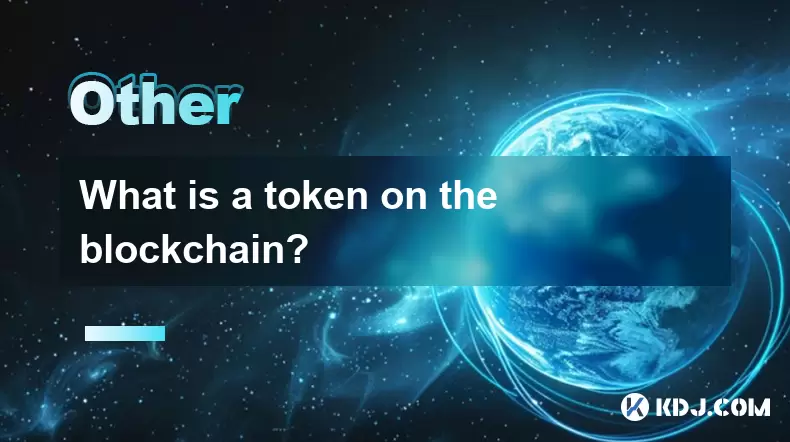
What is a token on the blockchain?
Jul 21,2025 at 07:00am
Understanding the Concept of a TokenIn the realm of blockchain technology, a token is a digital representation of an asset or utility that exists on a...
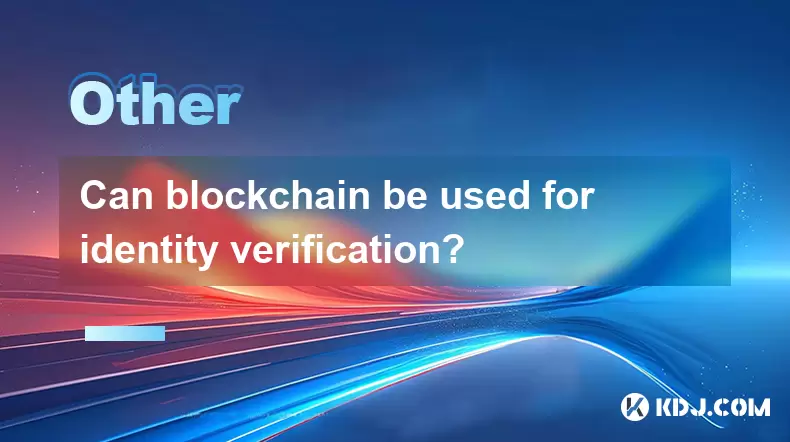
Can blockchain be used for identity verification?
Jul 18,2025 at 02:14pm
Understanding Identity Verification in the Digital AgeIn the modern digital landscape, identity verification has become a critical component for ensur...
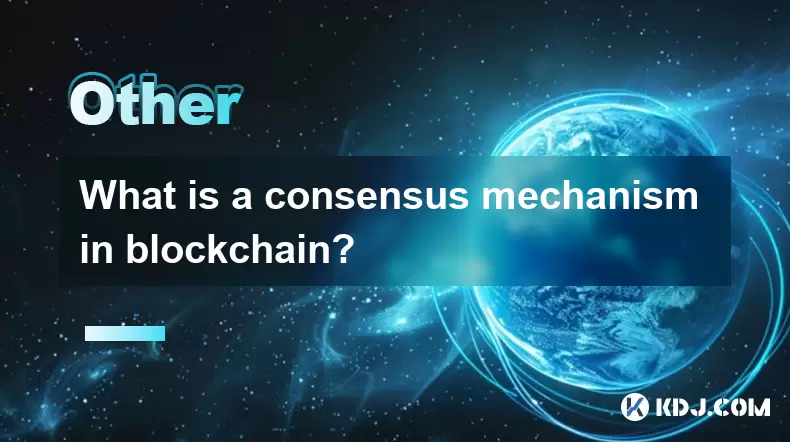
What is a consensus mechanism in blockchain?
Jul 21,2025 at 03:01am
Understanding the Basics of Consensus MechanismsA consensus mechanism is a critical component of any blockchain network. It refers to the process by w...
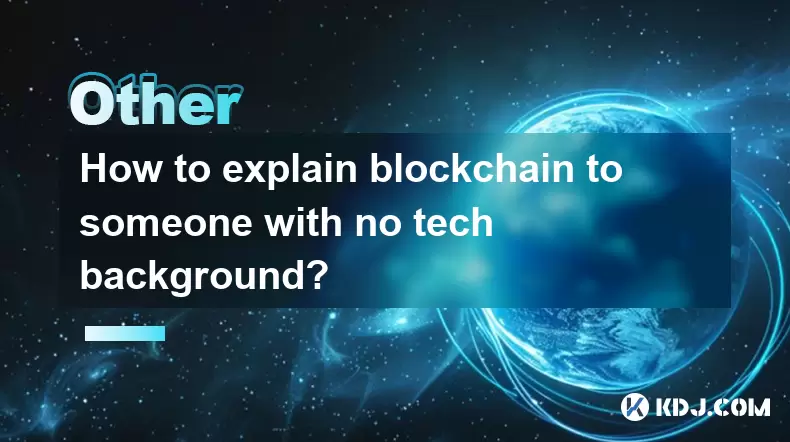
How to explain blockchain to someone with no tech background?
Jul 18,2025 at 11:08pm
Understanding the Basics of BlockchainTo explain blockchain to someone with no tech background, it's essential to start with simple analogies and avoi...

Who invented blockchain technology?
Jul 23,2025 at 01:28am
Origins of Blockchain TechnologyBlockchain technology did not emerge from a single inventor or institution. Instead, it evolved through a series of ac...
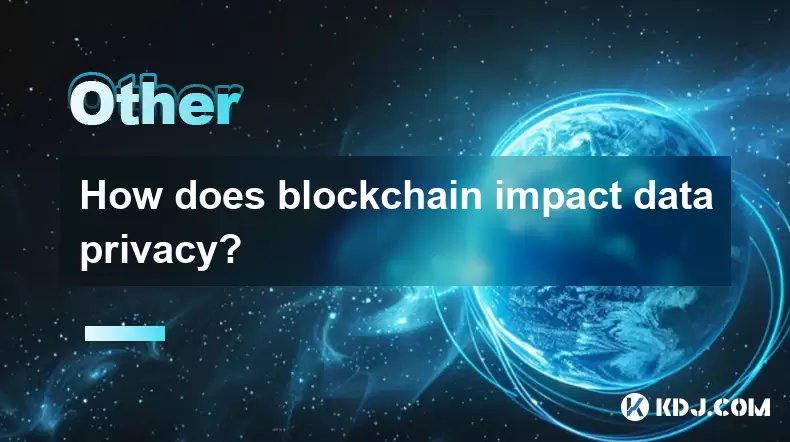
How does blockchain impact data privacy?
Jul 21,2025 at 02:21pm
Understanding the Role of Blockchain in Data PrivacyBlockchain technology, originally developed as the underlying infrastructure for cryptocurrencies ...

What is a token on the blockchain?
Jul 21,2025 at 07:00am
Understanding the Concept of a TokenIn the realm of blockchain technology, a token is a digital representation of an asset or utility that exists on a...

Can blockchain be used for identity verification?
Jul 18,2025 at 02:14pm
Understanding Identity Verification in the Digital AgeIn the modern digital landscape, identity verification has become a critical component for ensur...

What is a consensus mechanism in blockchain?
Jul 21,2025 at 03:01am
Understanding the Basics of Consensus MechanismsA consensus mechanism is a critical component of any blockchain network. It refers to the process by w...

How to explain blockchain to someone with no tech background?
Jul 18,2025 at 11:08pm
Understanding the Basics of BlockchainTo explain blockchain to someone with no tech background, it's essential to start with simple analogies and avoi...

Who invented blockchain technology?
Jul 23,2025 at 01:28am
Origins of Blockchain TechnologyBlockchain technology did not emerge from a single inventor or institution. Instead, it evolved through a series of ac...

How does blockchain impact data privacy?
Jul 21,2025 at 02:21pm
Understanding the Role of Blockchain in Data PrivacyBlockchain technology, originally developed as the underlying infrastructure for cryptocurrencies ...
See all articles

























































































